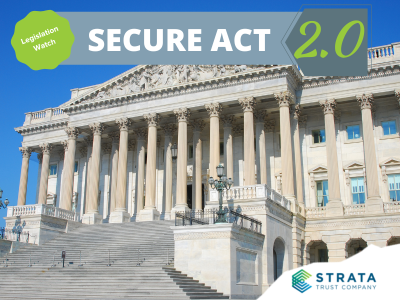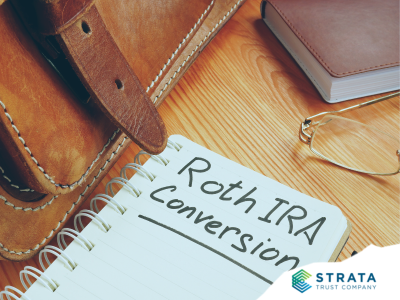Helping your child start an IRA could make for a great gift this holiday season. Anyone can have an IRA if they have earned income, including workers younger than 18. It’s never too early to start saving – imagine the financial head start you could give your children or grandchildren by starting an IRA for them today. Here’s what parents need to know about minor IRAs.
What a Minor IRA Can Provide
Financial Literacy
A minor IRA can be a valuable tool for teaching a variety of financial lessons, from deciding how much to save, to managing taxes and investing. A savings calculator can be a fun way to demonstrate the power of compounding interest and help them understand how saving different amounts or changing the rate of return can affect their account balance later. For example, using STRATA’s Future Value calculator, an IRA started in 2022 with a $1,000 deposit that receives $100 per month for 20 years (earning 7% interest), would be worth $54,633 in 2042. In 50 years, with the same contribution schedule, the IRA would be worth $532,851.
A Nest Egg
In addition to teaching kids how important it is to save for the future, an early start on savings can provide the child with a safety net for a financial emergency down the road or the possibility of an early retirement. Decades of tax-deferred or tax-free growth can build a significant account balance for the child, even if they stop contributing to that IRA as an adult.
College
Having money in an IRA instead of a savings or other account may help when it comes time to apply for financial aid, because retirement accounts do not count as assets of the account owner. If funds are needed from the IRA to help pay for school, the 10% early distribution tax won’t apply to amounts used for qualified education expenses – and contributions to a Roth IRA can be withdrawn tax and penalty free for any reason.
First-Time Home Purchase
Up to $10,000 may be taken from a Traditional or Roth IRA for the purchase of a first home without being subject to the 10% early distribution tax. This is also a qualified reason to withdraw tax-free investment earnings from a Roth IRA before age 59½.
What Is Earned Income for a Minor IRA?
According to the IRS, earned income includes all the taxable income and wages from working either as an employee or from running or owning a business. If your child receives Form 1099 or W-2 wages, that compensation is eligible. If your child receives payment for work they do in cash, such as babysitting, yard maintenance, or working for a parent’s business, that could count too, as long as there are records tracking how much was received, for what type of work, and when. Parents may want to consult with a tax advisor to be sure a child’s income is eligible.
Who Can Contribute to a Minor IRA?
Your child’s IRA can receive contributions up to the lesser of 1) the amount of their earned income or 2) $6,000 for 2022. The annual limit increases to $6,500 for 2023. A parent or anyone else may contribute to the IRA on behalf of the child. One strategy used by parents and grandparents is to “match” the dollar amount the child decides to deposit (assuming the child has enough earned income to support the total contribution). The contributor may not take a tax deduction for contributions made to a child’s Traditional IRA, but the child may take a deduction if a tax return will be filed in the child’s name.
Who Controls a Minor IRA?
An IRA agreement is a legal contract between the IRA custodian and the account owner. Contract law does not typically allow a minor to sign a contract, so a parent or legal guardian must sign the IRA agreement on behalf of the minor to establish the IRA. The IRA will be opened in the child’s name and Social Security number, but the parent will manage the IRA until the child reaches the age of majority, typically 18 or 21 depending on state law. When the child reaches the age of majority, the child will sign a new IRA agreement and assume control of the account, including managing investments and future contributions and withdrawals.
Traditional IRA or Roth IRA?
You may establish a Traditional IRA or a Roth IRA as a minor IRA, but children with lower incomes may not benefit as much from a tax-deductible Traditional IRA contribution if they don’t earn enough to trigger a tax liability. A Roth IRA may offer more benefits to a child, including:
- The amounts contributed may be withdrawn at any time, tax and penalty free.
- The investment earnings may be withdrawn tax and penalty free when the child has had a Roth IRA for at least five years and reaches age 59½.
- Before age 59½, the investment earnings may be withdrawn free from the additional 10% tax for early distributions if the child has qualified education expenses or is making a first-time home purchase.
Take the Next Step
Give the gift of savings and start your child on their way to financial wellness in the future. If you are ready to establish an IRA in your child’s name, or have questions about the process, our self-directed IRA experts are ready to help – contact us today.














